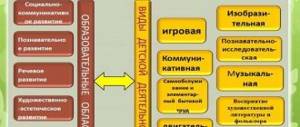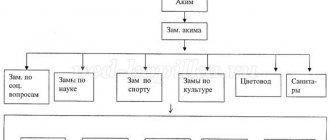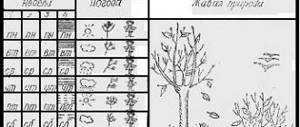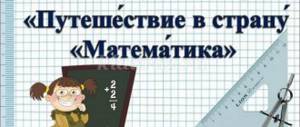Oral and written exercises in rotating pairs
How are exercises performed in traditional training? In class, during a lesson, for example, they study homogeneous members of a sentence: what conjunctions they are connected with and which conjunctions are preceded by a comma and which ones are not. The teacher discusses all this with all students during work. Students give their examples and analyze them. Then independent work in class and homework are given. Students do exercises in class and at home. The exercises are performed by everyone independently, i.e. individually, and are checked again during class work. Mutual verification, even if practiced, is not of significant importance. The emphasis is on written work, which must be completed individually by each student. Here is how the task is roughly formulated immediately after becoming familiar with the rule about homogeneous members of a sentence:
Exercise No.... Read. First write down sentences with homogeneous predicates, then with homogeneous secondary members of the sentence. And further suggestions are given:
1. In winter the sun shines, but does not warm. 2. The guys work fun and friendly. Etc.
Can't this task be done jointly, working in pairs?
It is much easier to complete it with a partner. You don't need to write it down to do this exercise. It is enough to first verbally highlight all sentences with homogeneous predicates, and then also verbally indicate sentences with homogeneous secondary members. Both students can begin this work at the same time. In this case, for example, the first student (No. 1) reads the first sentence and says: “In this sentence there are two homogeneous predicates: it shines and it warms.” Next, the second student joins. And so, discussing together, they complete the entire exercise. The teacher can clarify whether or not to rewrite this assignment in a notebook.
Let's look at another task from the textbook.
Exercise No.... Make three sentences from these words:
- Protects, pioneer, fires, patrol, from, insects, harmful, forest, from, etc.
- Schoolchildren, feed, clear, animals, forest, harvest, etc.
- Acorns are collected for future plantings, and young oak trees are looked after.
Sort out the first sentence by sentence members and parts of speech.
It is much better to make a sentence from a list of words, parse it into sentence parts and parts of speech , than with one. Of course, you can then do the exercise in writing. Or, in pairs, do the work only with the first sentence, and the rest separately, but with subsequent verification.
An analysis of tasks and exercises based on the author’s textbooks “Russian Language” confirms that almost all exercises can be performed in pair work. However, many exercises, for health-saving purposes, can be performed orally or mainly orally and only partially in writing.
Why is the emphasis placed more on performing the exercise orally? Yes, because working in pairs is mostly oral communication . Writing requires privacy: those who need to write a lot do it separately, individually.
Almost all exercises can be performed in pairs, and in most cases this is more advisable.
Of course, this significantly changes the method of work of each student. For example, I learned a rule and completed an exercise for it. If after this I start working with one of my students, then naturally I will check how he has mastered the rule (theory), and then invite him to perform out loud the exercise in which I am already strong . If my partner has completed the same exercise, then we will limit ourselves to just mutual checking. If the exercises are different, then he performs something new for him under my control, and then I perform another exercise, I under his control. This is the general rule, but for each academic subject, for each topic, it is specified in infinitely different ways.
Solving problems and examples in shift pairs
In principle, any example and any task can be the subject of joint work in pairs. But such work needs to be effective. In each class, the teacher, preparing his students to work together in pairs, teaches them to pose questions to each other, which require the ability to think about the conditions of the problem, analyze its composition and content, and perform reasonable actions in order to solve the problem.
A student who already knows how to solve a problem behaves like a teacher: “Read the statement of the problem. Say what is known in the problem. What do you need to find? (What does the problem ask?) How will you find it? What action will you perform first? What will you find out?
If the task turns out to be overwhelming, then in this pair this student will not act as a teacher. But in the next pair he becomes a “teacher” and introduces the partner to the solution to this problem. If he explains to two or three students how a difficult problem is solved, he becomes enriched with new solving techniques and the problem ceases to be incomprehensible to him.
Memo “How to work in pairs in a lesson”
What do you need to know first, what then? 5. Make a solution plan. 6. Execute the solution. 7. Check the solution and answer the question of the problem.
During breaks, students should not run up stairs, near window openings and other places not suitable for games. When the teacher enters the class, the students stand up and greet the teacher. This is how students greet any adult who enters the classroom during class. 2. During the lesson, you must not make noise, be distracted yourself or distract other comrades from their studies with extraneous conversations, games and other matters not related to the lesson! 3.
It actually consists of two results of its participants, so the compliance of the overall result with the set goal depends on the correctness of the task completed by each participant.
The results of this study prompted the Russian teacher Miloslav Balaban to conclude: a school, regardless of what country it is located in, only 1 out of 10 students learn successfully. No matter how hard we try, only 10% study successfully. Why?
Cards are placed in front of all the children in the class, back side up. Half a proverb is written on them, for example: on one card “you drive more slowly”, on the other - “you will go further”. Paired cards are located at different ends of the class on different options. The guys' task is to find the right partner and form a couple.
Follow the textbook to see how this rule is applied. Do the same with your example. If you completed the assignment in writing, check what you wrote.
The training can be made more difficult. Offer cards with riddles to the first option, and cards to the second with answers. The first option remains in place, and the second goes in search of the desired riddle. It is interesting to use such training in mathematics lessons, where one option is given problems, and the other is given answers.
Compare the paragraph you are studying with a paragraph that presents similar material studied earlier. Find similarities and differences in them.
If you see that your friend is doing worse than you, help him, but try to do it in such a way that he himself works with full effort. Watch to see if he makes mistakes; if he does, correct them tactfully and kindly.
Introduction to the task (1 min.)3. Distribution of tasks within the group (15-20 sec.)4. Completing tasks (3-6 min.)5. Discussion of the results of the work in the group (2-3 min)6. Answers from group members.7. Evaluation of your work in the participant’s personal card (20-30 sec.)8. General conclusion about group work and achieving the set goal.
If you are completing a task with a friend who is approximately equal in strength to you, then try to divide all the work equally. Help each other in case of difficulties, tactfully correct each other's mistakes.
The most favorable conditions for the inclusion of each student in active work in the lesson are created by group forms of work. I begin to introduce pair work into my practice from the first grade. As preparatory work in lessons, there is a combination of frontal and individual forms of work. In one class there are strong, weak, and average students.
If you are completing a task with a friend who is approximately equal in strength to you, then try to divide all the work equally.
Method of interchange of tasks
This technique was developed by senior lecturer of the Department of Higher Mathematics of Krasnoyarsk University, Candidate of Physical and Mathematical Sciences Manuk Ashotovich Mkrtchyan; first he worked with university students, and then with school students in Krasnoyarsk. The technique is applicable when studying various academic subjects. Read more about task exchange.
Description of the work method.
Cards with two types of tasks are given out in class. Everyone chooses the card that is more understandable to them. Pairs are made up of students with different tasks. Then, working in pairs, they can exchange tasks. The exchange is carried out as follows: Ivanov trains Petrov, and Petrov trains Ivanov. After the explanation, everyone completes the building independently. After checking each other's correctness of problem solving, the partners disperse. This is where their work in this pair ends, and the pair breaks up. Each of them is looking for a new partner.
Learning poems
Knowing poems, songs, and literary prose by heart is of enormous spiritual value. But how to organize the learning of poems in the classroom, during the lesson? Usually everyone learns poetry on their own. Some people like to say phrases out loud, then they remember them better and faster. Others read in a low voice, close their eyes, trying to reproduce everything. But there are 30-40 students in the class, and reading poetry out loud interferes with work. Not everyone in such an environment can memorize a poem or some literary text. However, many teachers have developed a way of studying poems and prose in rotating pairs. How does this happen?
Students can learn poems in rotating pairs in different ways. You can give 10-15 poems at once, and the class learns all these poems by heart at the same time. For someone who is quite familiar with the collective form of training, this is nothing special. But we start with a simpler case, when the whole class, all students learn only one poem. This is not normal for group learning sessions. Students must have different topics, different tasks, and only under this condition is real normal, collective work . The fact that all students in a class learn the same poem at the same time is a tribute to traditional teaching, a relic of the group method of teaching. But in elementary school, while the period is transitional, this has to be taken into account.
“Work in pairs during lessons in primary school, as a means of forming learning skills”
The goals of these Rules are to create a favorable environment for learning, safe conditions for staying at school and on its territory, instilling respect for the human person and its rights, and developing skills of cultural behavior in society. If you are completing a task with a friend who is approximately equal in strength to you, then try to divide all the work equally. Help each other in case of difficulties, tactfully correct each other's mistakes.
Rules for a schoolchild 1. When you wake up, get up, don’t let yourself be lazy! 2. The dew washed the petal, but the soap will wash you. 3. Don’t wait for prodding. Go to school on time. 4. Before slamming the door, check whether you took everything with you. 5. At school, in class, don’t litter; if you see litter, pick it up. 6. Don’t carry chalk in your pocket, that’s not the point, my dear. 7. Be careful in your clothes, avoid holes and stains! 8.
Upon completion of training, we will immediately send you an electronic version of the education document and send the original by mail.
The traditional school is aimed at solving two main problems. Firstly, it must equip students with solid knowledge, and secondly, prepare them for life by developing the most important skills and abilities. Development has been relegated to the background for a long time.
Thus, educational work acquires a personal meaning; fulfilling the roles of teacher and student in pairs; the child begins to feel more competent and significant, self-esteem increases, cognitive activity and motivation grow. Master class “Work in pairs during lessons in primary school, as a means of forming educational skills” Author: Natalya Petrovna Shevchuk, primary school teacher, MBOU “Secondary School No. 3”, Krasnoperekopsk.
Work with text. Method of paragraph-by-paragraph elaboration of texts (articles)
The technique proposed by A.G. Rivin is both simple and complex. Simple, because each student, working through his article (text, assignment), draws up a simple plan. The difficulty lies in the fact that the student works through the article (text) not alone and not just in pairs, but working with students in turn. If he works on the first paragraph (about 5-12 lines) with one student, then he studies the second paragraph (about the same length) with another, the third with a third, etc. What does the work with the first partner consist of? One of the pair’s students (any one) reads the first paragraph of the text and then both begin to analyze it:
- What is this paragraph talking about?
- what title do you suggest?
- why do you think that this title expresses the content of the paragraph?
- Is it possible to give a more precise title?
When discussing a title, students sometimes reread the text several times, argue, discard one title and look for another, polish the verbal formulation of the title. Every now and then a tense mental scuffle, a battle, arises. At the first meeting, only the first paragraph is worked out, the title agreed upon by each other during the discussion is written down, and then the couple breaks up, each finding a new partner.
How does it work with another partner? First, they exchange notebooks and ask: “Should I listen or tell?” If the partner answers: “Listen,” then, for example, I, as a participant in the class, should put the article (book) in the middle and tell what I worked with the first partner. If something is forgotten, you can reproduce what you need right there from the book. Then I ask: “Any questions?” If not, then one of us reads the second (next) paragraph aloud. We discuss, select the most appropriate title, and if I agree, then my neighbor writes this title in my notebook. After that, we move on to the same work based on the partner’s text. Having finished working on the next (second) paragraph, we separate and start working with a third partner. We exchange notebooks, find out who is telling and who is listening to the presentation of the content of the already worked paragraphs (parts), according to their article, then again - finding and discussing the title (item of the plan), recording in the notebook that owns the topic. Then - work according to the partner’s text, a signal about the end of work in this pair, transition and work with a new partner.
Organization of joint work of students in pairs and groups during mathematics lessons
An important educational task of elementary school is to develop in students a sense of collectivism and comradely mutual assistance. Many educational activities organized by primary school teachers are aimed at solving this problem.
This form of organizing the educational activities of younger schoolchildren, when students are united by common educational goals, but each of them plays their own specific role in this work, has certain possibilities in this regard.
The foundations of the personal qualities that are formed in students are laid in the depths of those relationships that arise between students, between students and teachers in the conditions of educational activities. Therefore, one of the goals of modern education is to teach children to master the world by interacting with each other, to make this form the content of each child’s education.
This article describes the experience of organizing student collaboration in mathematics lessons in primary school.
At one of the lessons, 4th grade students were asked to solve an example written on the board: 369x948–975172:2396
Immediately after starting work, the teacher, using a clock, began to count the time out loud at one-minute intervals. Most students in the class spent 12 minutes solving the entire example. After the example was solved, the teacher drew attention to the fact that in this example, two of the three actions allowed parallel execution. And if division and multiplication were performed simultaneously by two students sitting at the same desk, and subsequent subtraction by one of them, then the time for solving the example could be reduced. It was decided to test this proposal by calculating a similar example: 896764:1958+893x652
Considering that when working together, productivity is to a certain extent influenced by the structure of the personal relationships that have developed in the class, students were given the right to choose a workmate at their own discretion. Some students took advantage of this right by changing their place during the break.
The timing showed that the time to solve the second example was reduced to 8 minutes. After this, the teacher invited the students to express their opinions about the form of educational work. What was the children's opinion?
Most of the children supported the advisability of pair work when completing difficult tasks. After all, solving examples together allows you to significantly save time. The teacher leads the children to the conclusion that before solving an example, they need to carefully look at the actions included in it and distribute them among themselves not arbitrarily, but taking into account the abilities of each student. The guys, doing their part of the work, felt responsible not only for themselves, but also for their neighbor. Working in groups allows students to experience this feeling.
In addition to pair work, the teacher also uses group work of four people in mathematics lessons. In this case, students are divided into groups at will, and each group sits at a separate table. To solve it, a problem is proposed, the conditions of which were written on the board. What tasks are more convenient for such work?
Based on experience, we can conclude that for a group of four people to work, it is advisable to use not traditional problems from a textbook, but non-standard problems, and those that involve enumerating various possible solution options during the solution process. In this case, students can pre-distribute the proposed solutions among themselves and check each of them. This can be illustrated with an example.
“Among six ancient coins of the same appearance, there is one counterfeit one - a lighter one. Find this coin using a scale without weights. In this case, no more than two weighings can be performed.”
To help students identify possible solutions to this problem, the teacher draws their attention to the fact that a different number of coins can initially be placed on each scale.
Option 1. Two coins are placed on each pan of the scale. If the scales remain balanced, then the counterfeit coin is one of the remaining two. We can easily find it by placing these coins one at a time on the scales (the fake one is the one that rises up).
If the scales do not maintain balance, then the remaining two coins are real. Real coins and those that fell down on the scales. We put them aside. We place the coins from the other scale pan on the scales one at a time. This is the second weigh-in. The counterfeit coin is the one that rises to the top.
Option 2. Three coins are placed on each pan of the scale. One of the scales will definitely rise up. This means that the counterfeit coin is on this bowl. Take any two coins from this bowl and place one on the scales. We put the third coin aside for now. If the scales remain balanced, then the counterfeit coin is the one we set aside. If the balance of the scales is disturbed, then the counterfeit coin will be the one that rises up (after all, it is lighter).
As you can see, each of these options allows you to find a counterfeit coin in two weighings. Therefore, it is advisable to advise two students of each four to work out the option when two coins are initially placed on each scale, and the other two to work on the option when three coins are initially placed on each scale.
What is the best way to search for a solution? This can be done, for example, in the following way: one of the students argues out loud (quietly), and the second listens carefully to him and tries to find an error in this reasoning. If the correct option is found, it is brought up for discussion by the whole four.
After a joint discussion of all the options, one student from the four comes to the board and explains to the whole class the solution found by their group. Since problems of this type have more than one solution, and representatives of several groups can be heard at the board, it is possible that among the proposed options there will be erroneous ones.
Experience working with students in pairs and groups in mathematics lessons shows that both when working in pairs and when working in fours, there were students who, having found the correct solution to a problem, sought to immediately inform the teacher about it. This required putting forward the following condition for joint work: each student from the four must be able to explain the solution found at the board. Only in this case one of them was invited to the board. Using this technique helped encourage students to help their peers.
The ability of students to work together (distribute among themselves the volume and sequence of educational work, justify the correctness or prove the fallacy of various options for solving problems, come to the aid of a friend if he has difficulties, etc.) is an effective means of solving a number of educational problems. Such work can be carried out in mathematics lessons starting from the 1st grade, as well as in extracurricular activities.
Joint group or pair work of students during lessons in primary school is an effective form of organizing educational activities. Fears that the organization of joint activities in pairs or groups will lead to the fact that only individual students will actively work in pairs and fours, and the rest will be limited to passive appropriation of the results of their work, are unfounded. As part of joint activities, favorable conditions are created for the development of such important qualities in younger schoolchildren as the ability to make free choice, control and evaluate the process and result of educational activities.
Literature:
1. 2005 Yalovets T.V. Technology of a collective method of teaching in teacher training: Educational and methodological manual. - Novokuznetsk: Iz-vo IPK, 2005.
2. 2004 Dyachenko, Vitaly Kuzmich. Collective way of learning. Didactics in dialogues. - M.: Public Education, 2004.
3. 1998 Lagunova Lyudmila Ivanovna “We teach each other in class. Organization of students' work in constant and variable pairs when teaching chemistry at school. Methodological manual", Tver, Tver Regional IUU, A4 format, 70 pages, diagrams, drawings, tables - 78
4. 1998 Gromyko Grigory Olegovich “Education as a natural process and as a self-organizing activity”, Schwerin, Germany, from Reinhard Thon, ISBN 3–928820–98–2, 26 pp., diagrams, drawings, tables - 3
Creation of “Live Tasks”
To create live tasks in pairs of shift personnel, you need to first prepare two versions of tasks.
For example (grade 1):
Option 1: Make up a “living problem” for addition using the numbers 8 and 3.
Option 2: Create a “living problem” for subtraction using the numbers 8 and 11. The teacher distributes tasks to the children. All students are seated in pairs with different options for tasks.
The work proceeds in the following order:
every
- composes and solves his problem in a notebook;
- preparing to explain her decision to her partner;
- explains the solution to his problem to his neighbor;
- listens to the partner’s explanation and evaluates it.
At the signal that work in a given pair is complete, the children change tasks and move on to work with a new partner.





